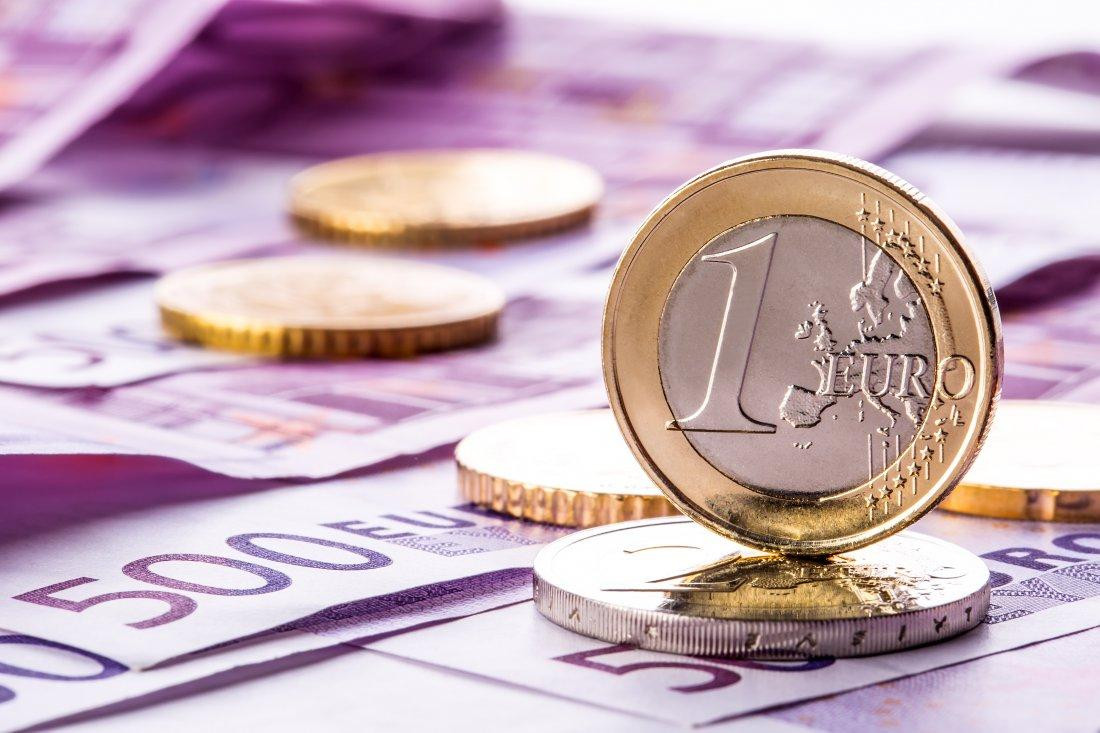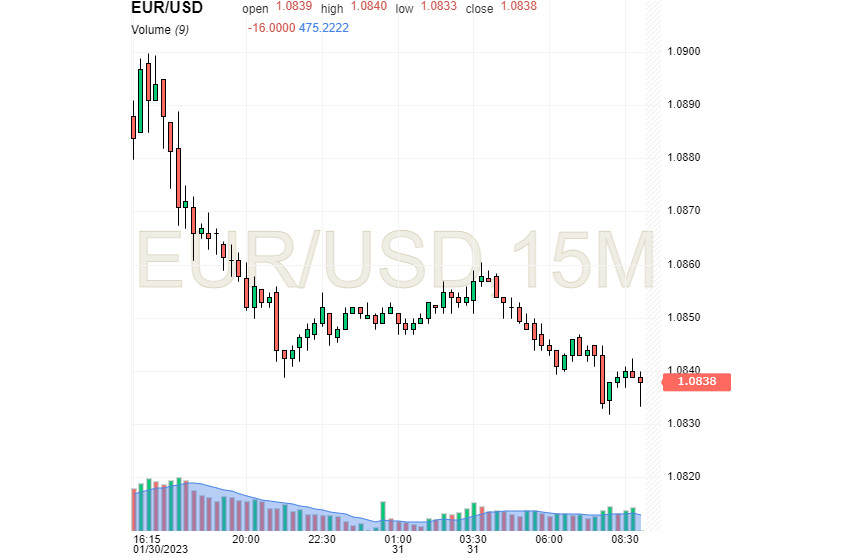
The euro is steady in an uptrend, but from time to time it stumbles and fails. At the moment, the euro's efforts are rewarded by its leading position against the dollar. However, the latter is not a complete failure either: the failures of the USD are compensated by its ability to quickly and efficiently recover.
The greenback started the week on a good note, but eventually lost its momentum. The USD's recent rise was boosted by upbeat US GDP data released last week. Macro data showed that the US economy grew faster than expected in the last quarter of 2022. However, the underlying PCE prices (excluding food and electricity) works as an impediment, which rose 4.4% year-over-year in December 2022.
This situation contributed to the rise of the euro, and the weak eurozone report did not hold it back from edging up. According to current reports, the German economy grew at an annual rate of just 1.1% in the last quarter of 2022. At the same time, the markets were expecting an increase of 1.3%. In addition, analysts are concerned about consumer price levels in Spain. According to reports, in January 2023, inflation in this country suddenly rose by 5.8%, which is an alarming signal in the run-up to the European Central Bank meeting. Market participants fear that the central bank will reconsider its current monetary policy due to this report. However, there is also a positive moment: this month, the indicator of economic sentiment in the EU has significantly improved, reaching 99.9 points.This indicator was at 97.1 points in December.
In this backdrop, the EUR/USD pair fell to a low of 1.0852 at the beginning of this week, but then took revenge and reached the round level of 1.0900. But eventually it faced some stumbling blocks and had to work hard to recover. On Tuesday morning, January 31, the EUR/USD traded around 1.0838, trying to break out of its downtrend.

According to analysts, the current situation is favorable for the bulls on the euro. At the same time, experts do not rule out that in the near future there will be clear signals to sell EUR, which will then launch a large-scale rally. However, such a scenario is now questionable, since the markets are focused on the current meetings of the major central banks, which will shape further vectors of their monetary strategies.
By now, financial markets have decided on the scale of monetary tightening. On Wednesday, February 1, the Fed is expected to raise interest rates by 25 bps. As for the ECB and the Bank of England, which are scheduled to meet on Thursday, February 2, the markets are expecting them to raise the rate by 50 bps each. Take note that the statements of the central banks' representatives will mark the nearest trajectory of the interest rates. At the same time, analysts do not rule out a further round of tightening of the monetary policy and a surge in volatility.
Experts believe that the ECB will raise the deposit rate by 50 bps, although the prevalence of dovish sentiment may prevent this. Many analysts and market participants believe that the current meeting is just an interim one, and they have high hopes for the March meeting. However many experts do not agree with this, believing that the current decisions of the ECB regarding the monetary policy will help the euro's growth.
Nevertheless, the importance of the ECB's March meeting cannot be denied, as it will coincide with the release of updated forecasts on inflation and economic growth in the euro area. However, there is still a risk of a stronger bullish sentiment on the euro in the market. Reports on unexpectedly high inflation rate in Spain contributed to the current growth of the single currency. Recall that in January this year, consumer prices in the country soared by 5.8%, showing the first monthly increase since July 2022. Against this background, market expectations for further rate hikes in the euro area have sharply increased. According to preliminary forecasts, in the fourth quarter of 2022 GDP of the 19 countries of the euro bloc grew by 1.8% in annual terms and declined by 0.1% in quarterly terms.
This situation sent the dollar into a knockout phase. As a result, the U.S. currency plunged to an eight-month low. In anticipation of meetings of the leading central banks, experts expect the Fed to increase the rate by 25 bps, and this will be the final option in the near term. Recall that the dollar rose to multi-year highs in 2022 amid demand for safe-haven assets and a rapid pace of Fed rate hikes. However, the situation has now changed and a repeat of this scenario is unlikely. According to analysts, the imminent task will be a partial weakening of the excessively strong dollar. Thus, by winding down the cycle of rising rates the Fed will "loosen" the greenback a bit. It is necessary to maintain a balance in international trade because an overly strong USD interferes with the key trading partners of the U.S.
At the moment the main task of the leading central banks, primarily the Fed, the ECB and the BoE, is to combat inflation. According to experts, the upcoming meetings of the central banks will be crucial in this matter. The results of the meetings will outline the guidelines for monetary strategies and further rates of the key world currencies, summarize the experts.
 English
English 
 Русский
Русский Bahasa Indonesia
Bahasa Indonesia Bahasa Malay
Bahasa Malay ไทย
ไทย Español
Español Deutsch
Deutsch Български
Български Français
Français Tiếng Việt
Tiếng Việt 中文
中文 বাংলা
বাংলা हिन्दी
हिन्दी Čeština
Čeština Українська
Українська Română
Română

